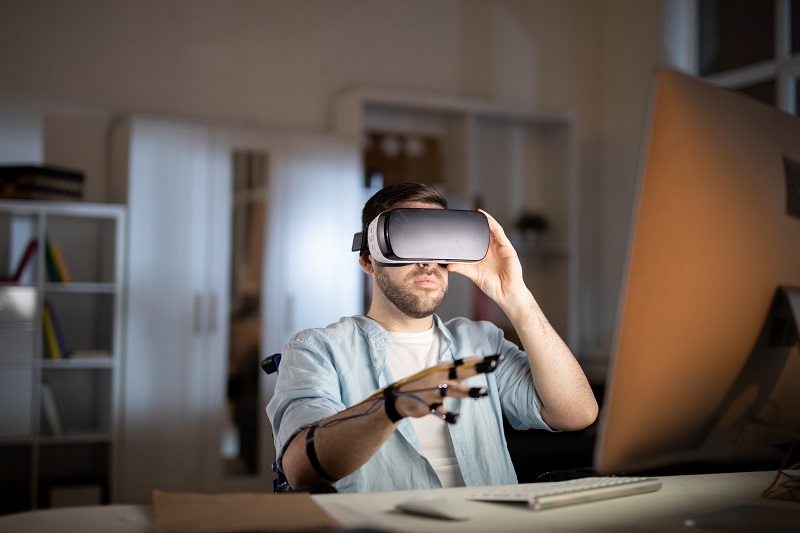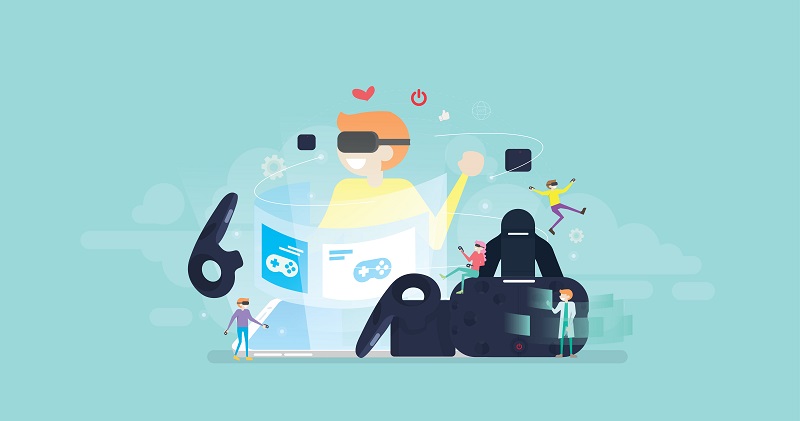
Owing to pandemic, 2020 has been an eventful year for Augmented Reality and Virtual Reality. While we struggled with adjusting to being confined to our homes and working remotely with limited resources, Augmented Reality has effectively reached every aspect of our lives.
As businesses explore and expand to remote work model, they have adopted technologies like Augmented and Visual Reality. In this article, we have listed the trends in AR that you should look out for in the coming years.
Avatars
Coupled with machine learning, artificial intelligence, and game engines, advanced artificially intelligent AR avatars are expected to grow in the coming years. In Japan, there are over 4000 anime-looking AR avatars that are active on YouTube. These are called Virtual YouTubers, or VTubers.
Improved learning and teaching
The traditional in-class learning and teaching experience has seen a major shift to virtual medium not only in schools, but also professional development courses. Augmented Reality can help in enabling the employees to practice the objectives and tasks in real-time. It will help in skill improvement and increased overall productivity.
Entertainment
Consumer entertainment has been a trend around Augmented Reality – however, the developers failed to find an app or hardware that made a major success. With the current developments being made in this niche, the arena seems to improve in the coming years. Both software and hardware is more accessible for consumer entertainment – which is paving the way for foreseeable success for AR in entertainment.

Augmented with Artificial Intelligence and Machine Learning
Augmented Reality and Virtual Reality developers have begun implementing AI and Machine Learning into applications. One of the most commonly used example would be Instagram’s filters. ‘Computer vision’ allows the device to see and make sense of the footage being captured through the camera lens. Though in use for some time now, it is expected to see an increased sophistication in 2021 and years to come.
Augmented Reality has also increased medical accuracy – Google’s microscope enabled with machine learning is capable of identifying cancer cells in tissue samples. AR, along with VR is expected to make medical technology more accurate and allow advanced diagnostic tools and complex treatments.
Marketing using the 360-degree strategy
Marketing services agencies have been using the 360-degree marketing up until now – even with limited application to images. Coming years hold the promise of rapid innovations in AR-fueled video technologies. Now, marketers can include a more immersive 360-degree videos. For businesses relying heavily on customer interaction, 360-degree online marketing solution could be the key to success in the coming years.
3D Environment and Immersion
Potential customers are always looking for more and more immersive technologies, especially with AR. Creating 3D environment and realistic experience rather than the common 2D options are guaranteed to provide an increased immersion rate. With the ongoing development in software and hardware, and increase in application development companies in India, it is a great time for developers to capitalize on AR.
Vehicle Safety
From the recent past years, investors have invested a fortune in developing autonomous driving technology. While still underway, manufactures are now reaping the variety of new technologies, many of which are AR powered. Coupled with machine learning and artificial intelligence, these technologies are developed to provide safety by detecting hazards on road. An excellent example is the AI dash board camera by Samsara.
Augmented Reality technologies are developed continuously – with the investments being made in the sector, it is going to stay and grow in the coming years. Not only will we be seeing an increase in companies that are already operating in the niche, but also the companies that operate outside of it will be soon adapting to it. Most importantly, the AR technologies will not lose their value after the pandemic is over. It will continue to increase productivity, provide improved user experience, improve safety, and many other advantages.
